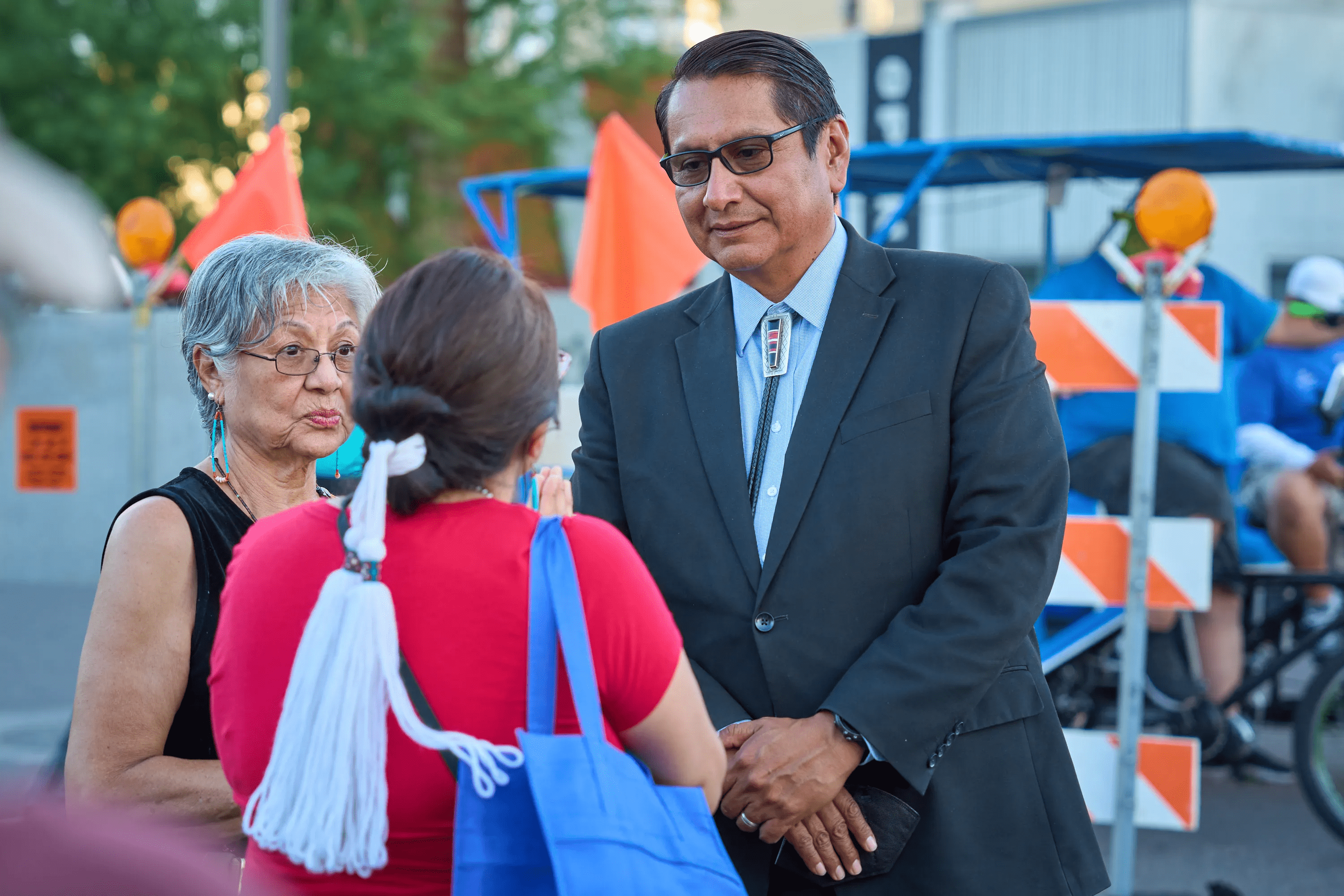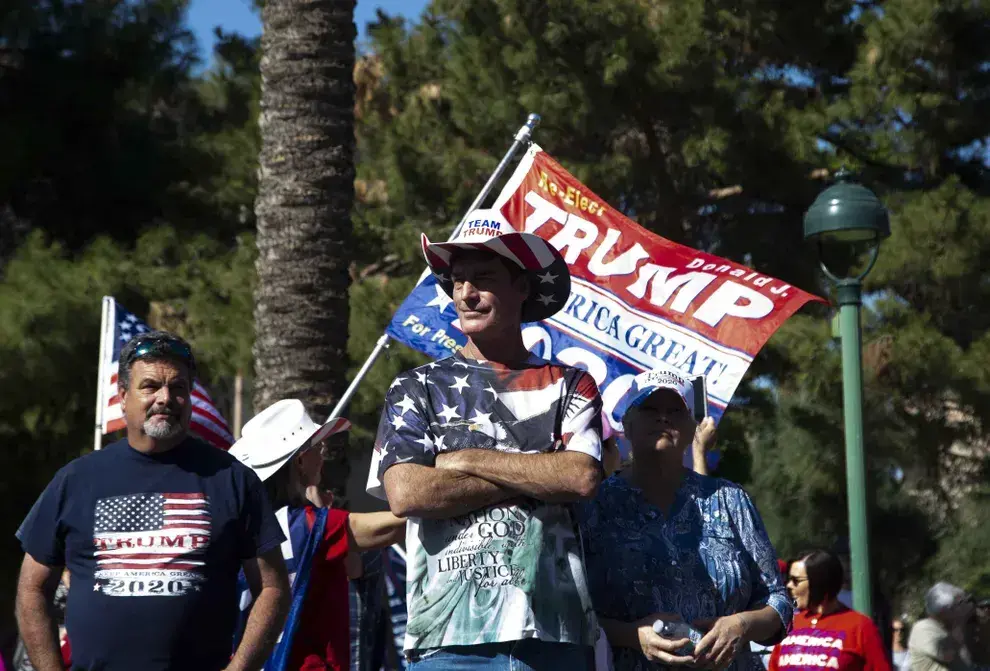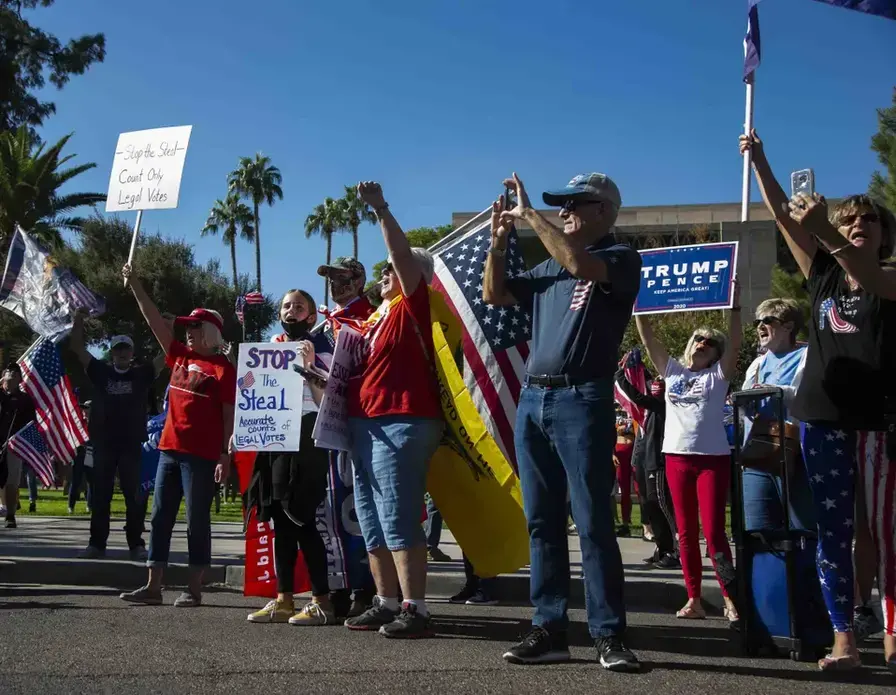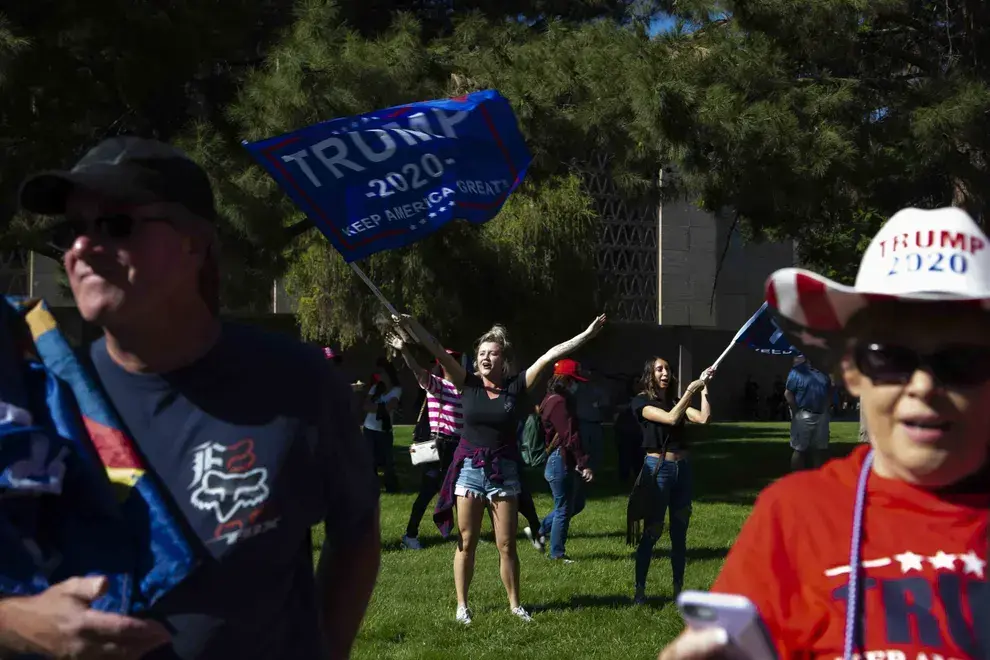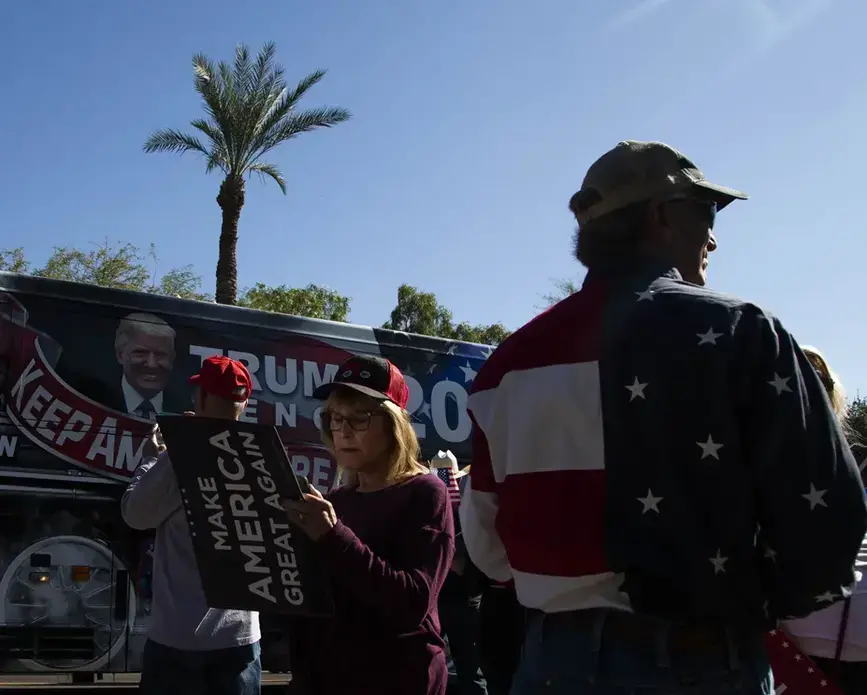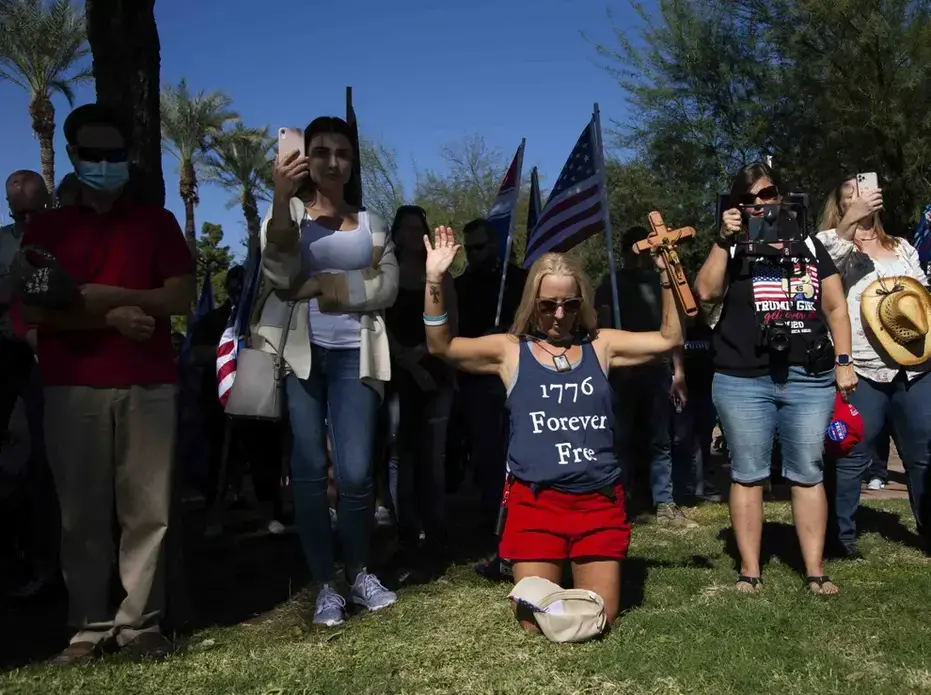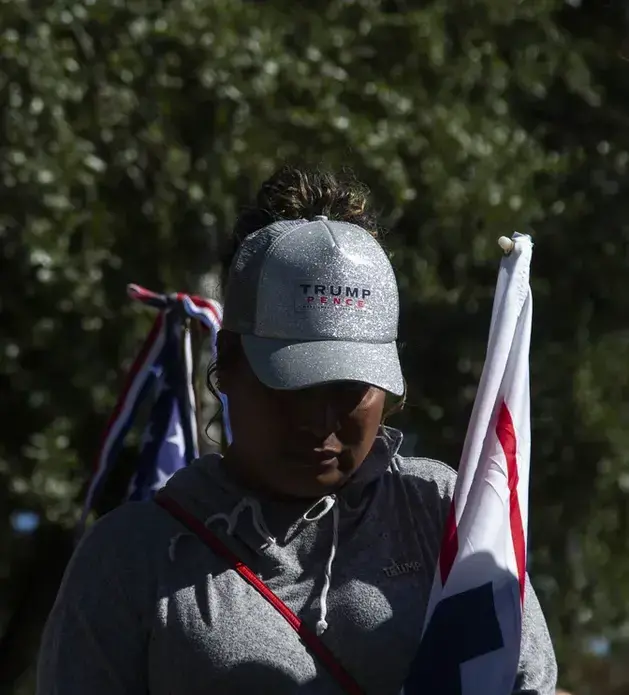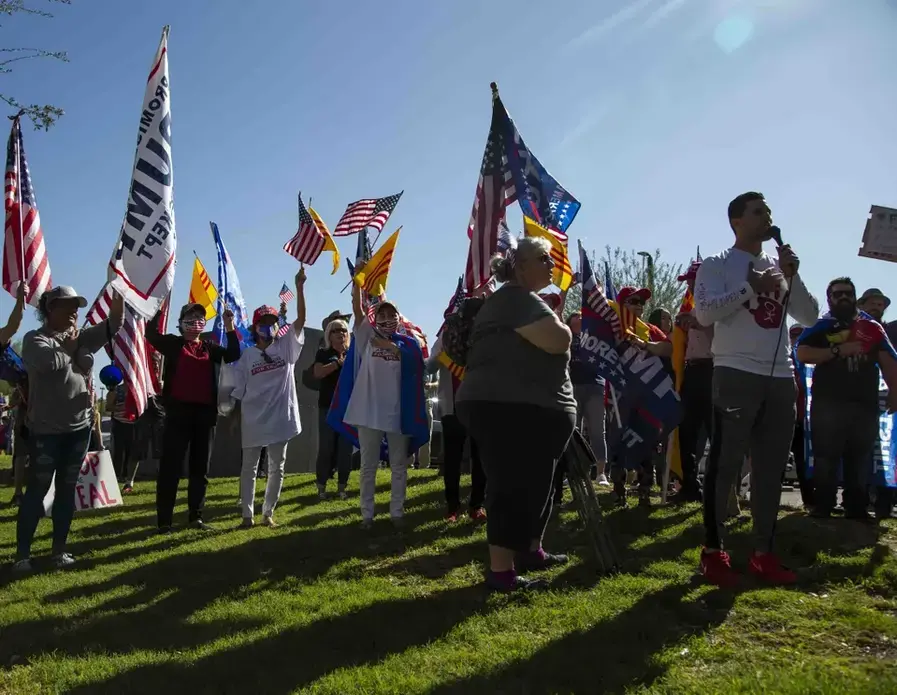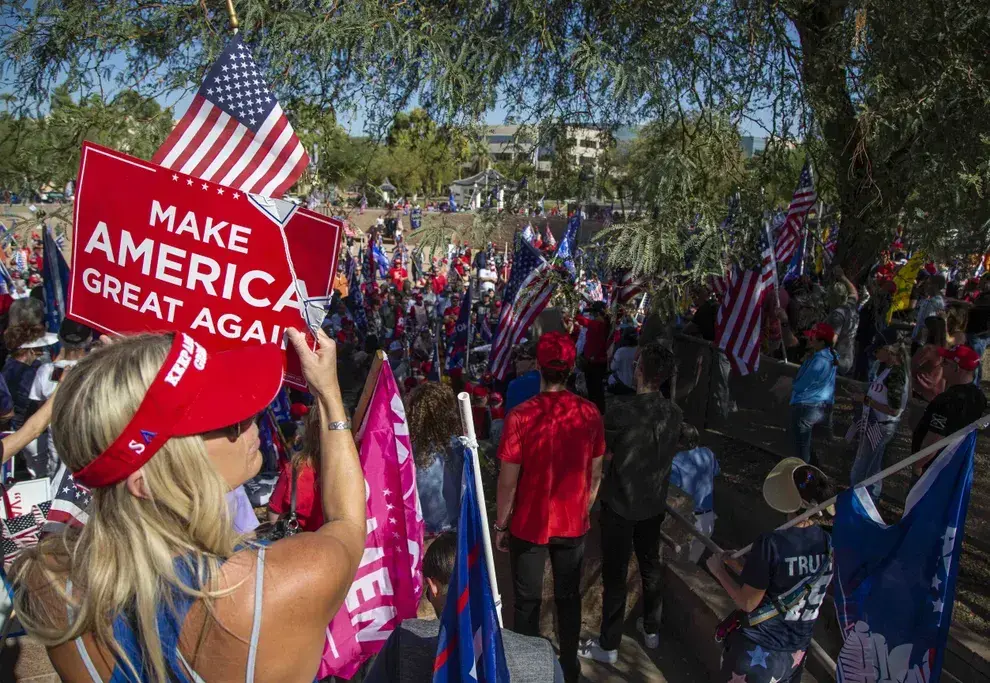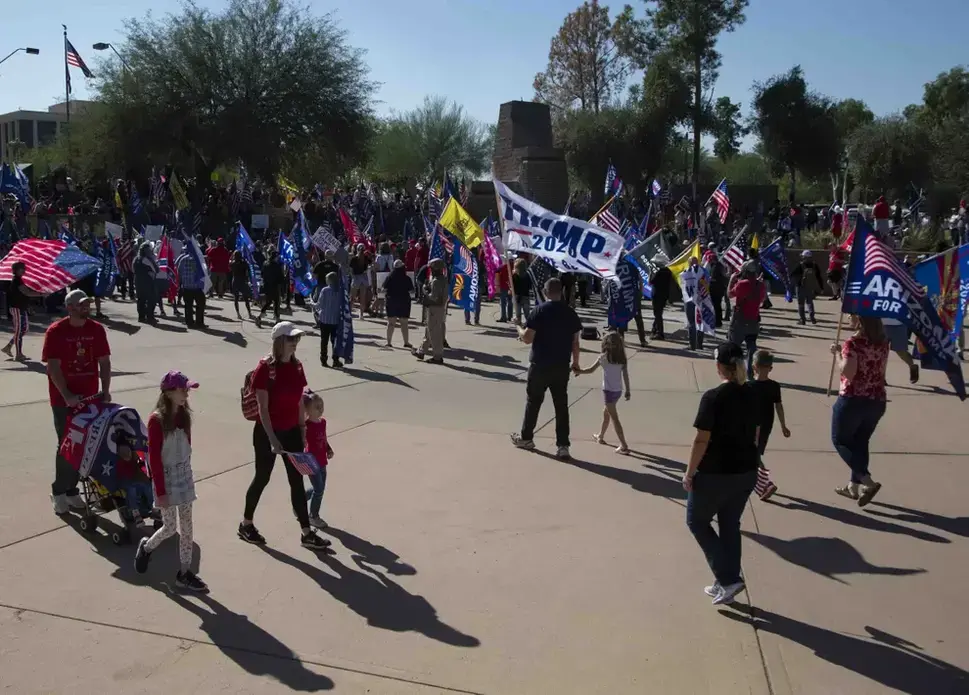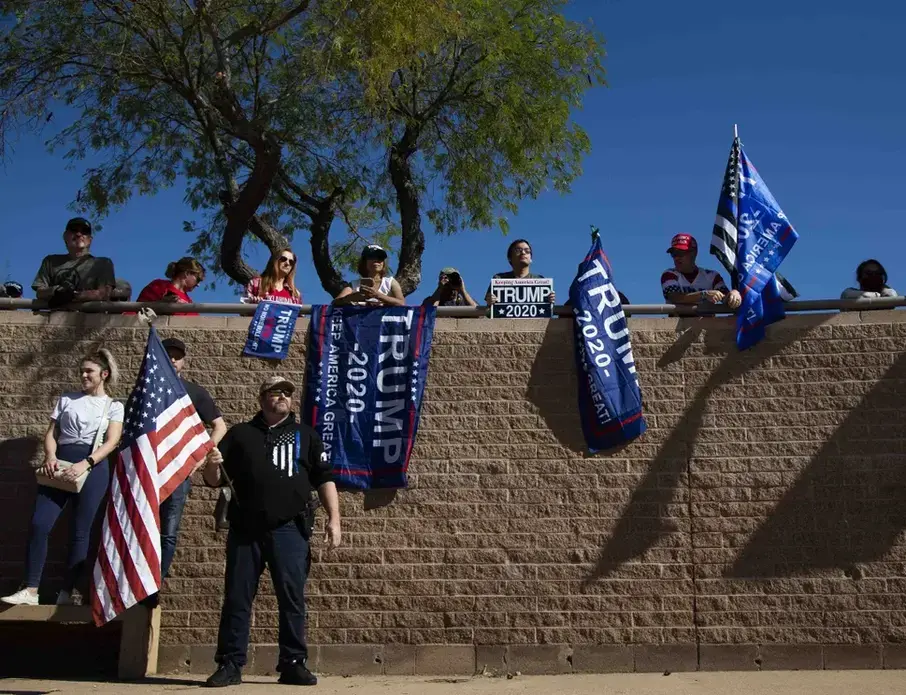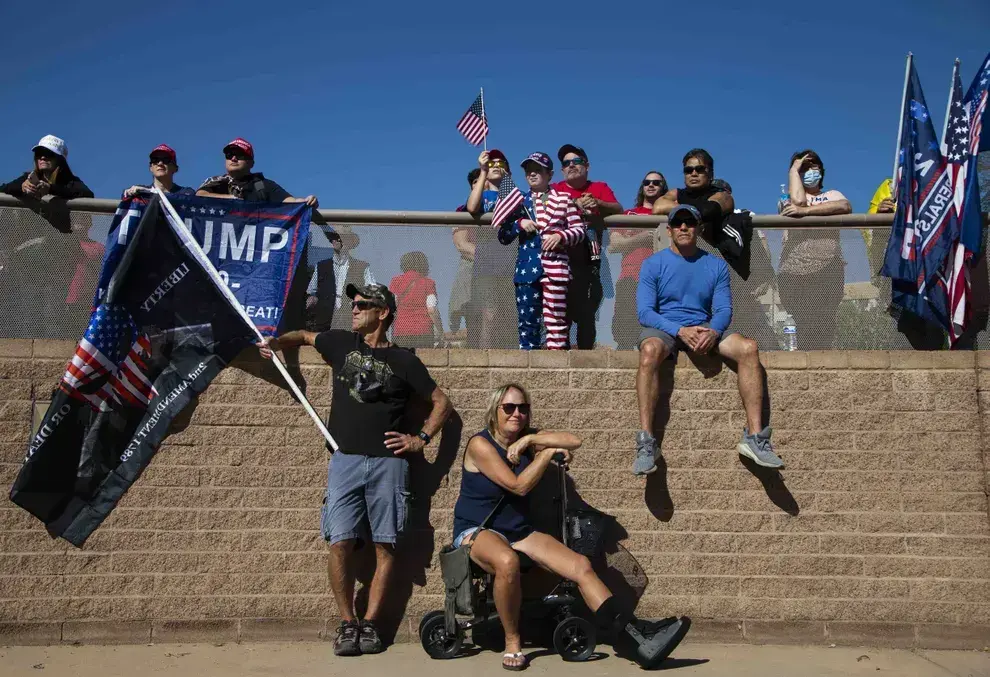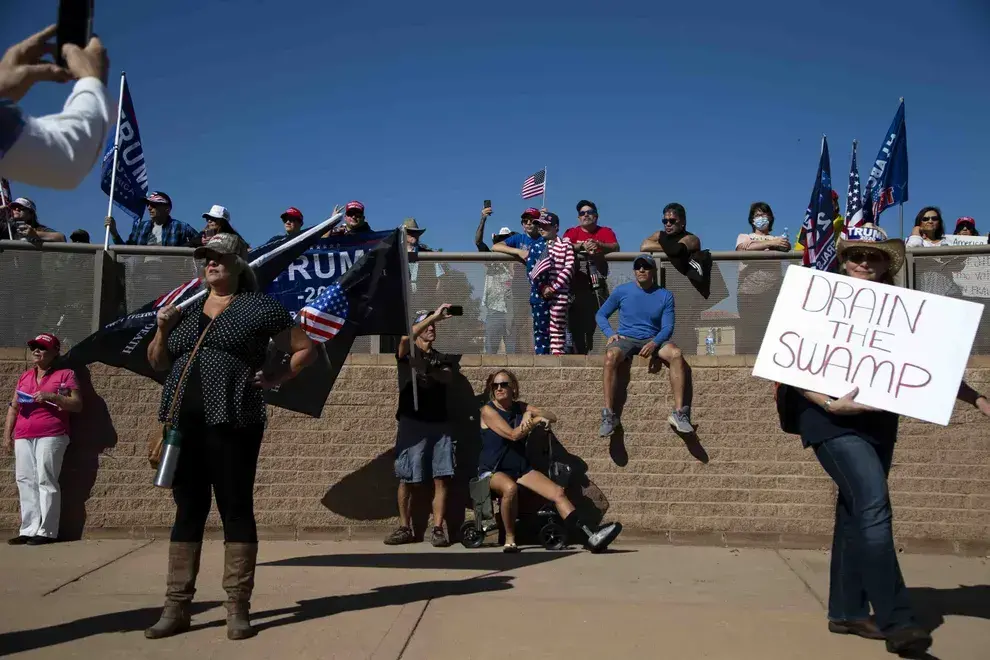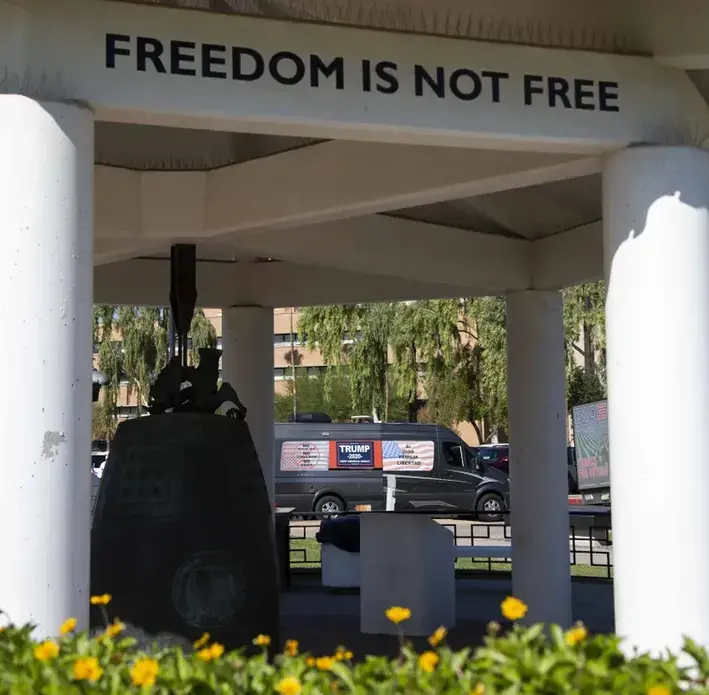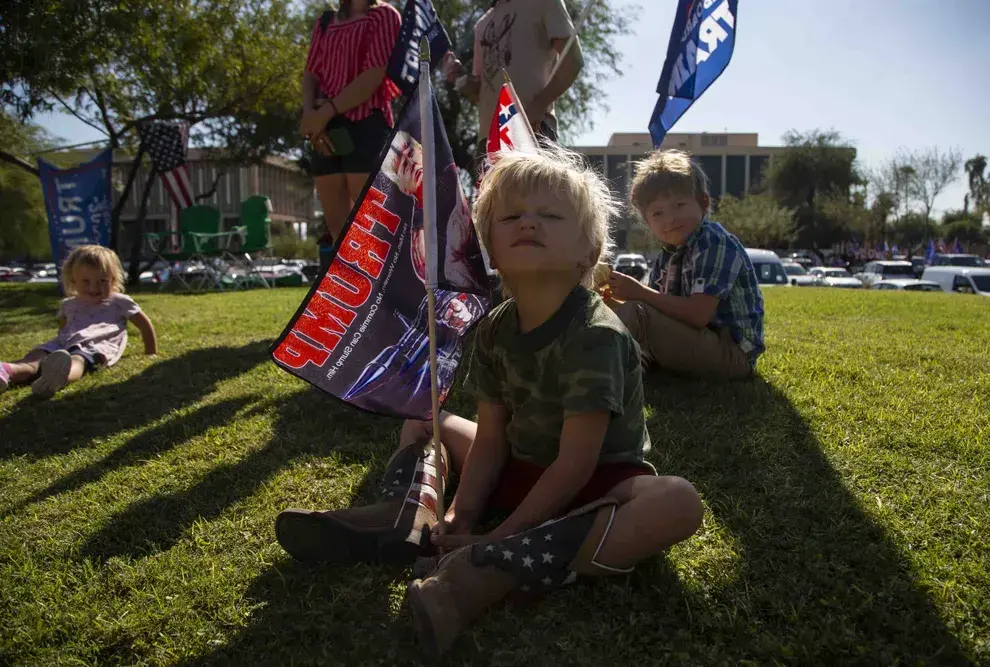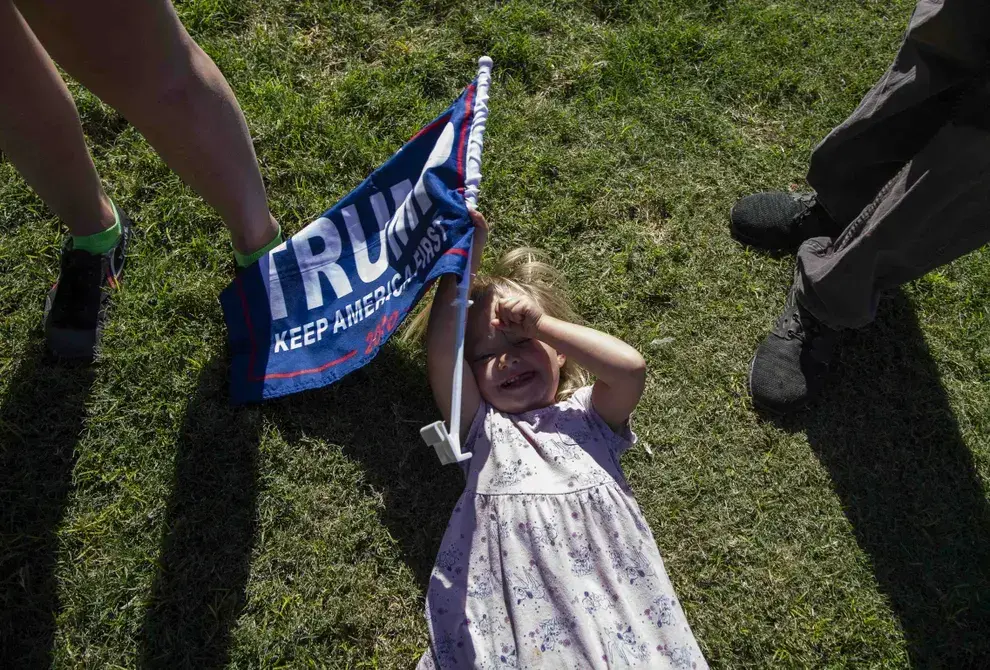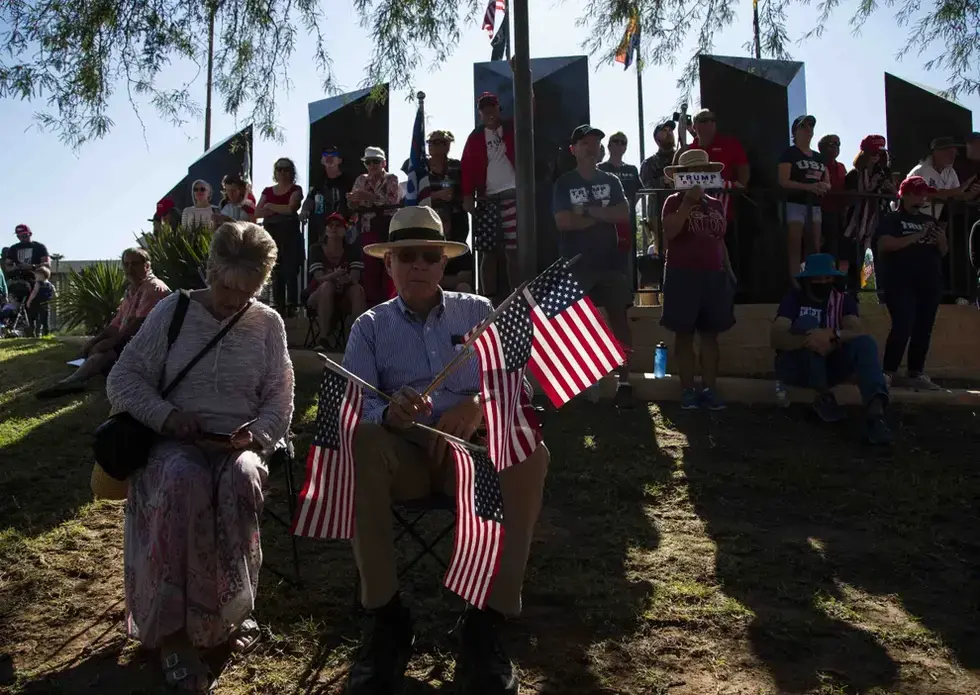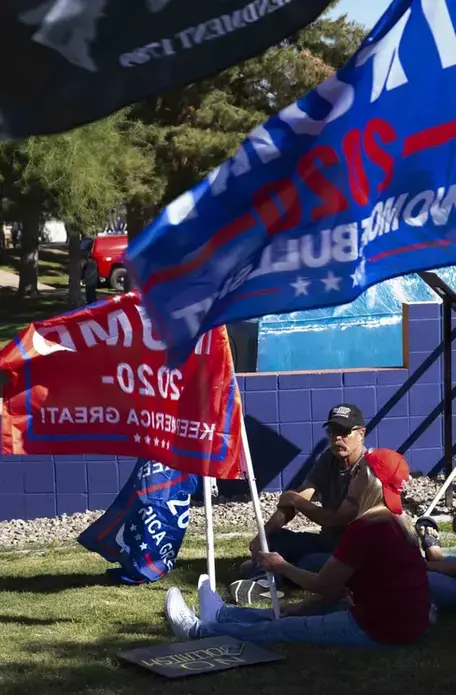Scott Bruske takes politics seriously and doesn’t shrink from sharing his views.
Not that those opinions would be that controversial in New River, the community in northern Maricopa County where the 66-year-old General Motors retiree lives.
“We’re sick of the Democrats,” Bruske said Friday between bites of lunch at the Roadrunner Restaurant.
Democratic priorities are out of step with his own, he says, Republicans are too casually attacked for dissent, the border with Mexico is a disaster, and there is inflation — painful and unrelenting inflation.
“Gas is expensive. Groceries are expensive. Used cars and trucks are out of sight,” Bruske said, estimating that filling up his diesel truck will probably cost him $125 this day.
In August, Bruske voted for former President Donald Trump’s preferred Republican alternatives in Arizona: Kari Lake for governor, Blake Masters for U.S. Senate and Mark Finchem for secretary of state.
Records show most Republican voters in New River did the same.
If you’re searching for the beating heart of the MAGA movement in Maricopa County, New River is part of a smattering of red precincts in the West Valley and northern part of the county where most are found.
It is where the Trump slate not only did well in August, but it also saw heavy turnout and voters there showed up in person on Election Day in larger numbers.
It was a pro-Trump trifecta that helped put exclamation points on primary wins for Lake, Masters and Finchem.
Places like New River are a clear reminder that while the county and the state are politically competitive, the map is mostly splotches of red and blue, with only patches of true purple.
There are growing signs that Republicans are poised to reassert themselves in Arizona, especially in statewide races. If that happens, these are some of the places that could have the biggest hand in making it happen.
The Arizona Republic examined precinct-level results from the August primary in search of the places that are arguably the reddest of the red in Arizona’s most populous county, at least in 2022.
In May, President Joe Biden inveighed against what he called the “ultra MAGA” agenda, referring to Trump’s “Make America Great Again” slogan and acronym.
The Republic’s research identified the places where MAGA is not just popular, but overwhelming.
Call it mega MAGA.
The Republic compared precincts in several important ways: how they voted in top races, how often they voted in person and how Republican-leaning the electorate is by registration and turnout.
The Trumpiest precincts in the county are clustered away from the dense Phoenix area. There is a pronounced V-shaped notch along the top of Maricopa County’s boundaries. The eastern side of that notch is home to New River, Cave Creek and other deep red precincts.
Just south and west of the tip of that V and heading out to the Sun Cities on the Valley’s west side are other pockets of outsized primary support for the Trump ticket.
Unsurprisingly, the lightest support for the Trump ticket among Republican voters was in areas with the fewest Republican voters. In general, the closer to Phoenix, the worse those candidates fared. Those are areas where Democrats such as incumbent Sen. Mark Kelly will need to run up huge victories to offset heavy losses in the Valley’s reddest areas.
If that happens, Democrats can hope that a band of purple precincts that roughly traces the path of the Loop 101 freeway and into the southeast Valley will break their way, as happened in 2018 and 2020.
If it doesn't, Republicans likely will dominate the results in statewide races.
Where the Trump ticket thrived
Of the many races on the Aug. 2 ballot, none shed more light on Trump’s hold on Republicans than the contested primaries for governor, U.S. senator and secretary of state.
The former president has held three political rallies in Arizona this year. He has aggressively backed Lake and Masters since the summer. Finchem won Trump's early endorsement last year.
Trump’s preferred picks won their Republican primaries, and they also won in Maricopa County, too, but in different degrees.
Lake, for example, won the gubernatorial primary with 48% of Republican votes statewide. In Maricopa County, she did slightly worse, 47%.
Masters won the Senate primary with 40% of GOP votes across the state and an identical share within Maricopa County.
Finchem won his race with 43% of votes statewide, although he garnered just under 40% in the county.
Their plurality wins belie the broad dominance all three demonstrated across Maricopa County.
As a group, all three won the most votes in 575 of the 901 precincts where there were Republican votes to count.
By contrast, there were only 10 precincts that collectively chose someone other than those three in those races. Of those, only four were Republican-leaning precincts: Palisades, Westwood, Willow and Yucca, all of which are located in Phoenix or the East Valley.
Palisades includes part of Fountain Hills in the East Valley. Westwood is in Mesa south of the Mesa Country Club. Willow is in north Phoenix, south of Thunderbird Road between Seventh Street and 19th Avenue. Yucca is in Phoenix west of State Route 51 around Shea Boulevard.
Many of the wins were narrow but added to their cumulative leads.
A few were lopsided and helped stand out as the reddest locales in the county.
In Crabapple, a precinct just on the northern side of the Loop 303 near Sun City West, Lake topped her competitors by nearly 50 percentage points. Masters and Finchem also won by wide margins.
Republicans dominate the areas around Sun City and Surprise, and it's where even Democrats sometimes see red.
Mary Leinberger, 69, is a registered Democrat in Surprise who increasingly feels out of place with her party. She recently left blank her choice for governor in the general election because she doesn’t like Lake or Democrat Katie Hobbs.
Lake has no experience and Hobbs is “a weak person” for not debating Lake, Leinberger said.
Her friend, Surprise resident Mary Beth Piekarski, is a committed Democrat who says she is vastly outnumbered by Republicans in her neighborhood and married to a Republican, too.
Politics, she said, generally is avoided in conversation with many of the people around her.
Inside the race between Lake and Taylor Robson
In the gubernatorial primary, Lake tended to do best in less-populous precincts and actually lost in the county's most-populous Republican precincts.
The precinct around the PebbleCreek development in Goodyear, which was built by Karrin Taylor Robson's husband, had the most GOP voters participate in the primary. Taylor Robson received 859 more votes there than Lake. It was a 27 percentage point gap.
Expanding it to the 20 busiest GOP precincts, Taylor Robson had a collective 2,070-vote lead over Lake. Those 20 precincts included about 39,000 votes in the governor's primary.
At the other end, Lake held a sizable 3,400-vote lead over Taylor Robson spanning the same number of votes but drawn from the smallest precincts. The top 20 busiest precincts had about as many votes cast as the bottom 277.
The density pattern didn't hold for Masters or Finchem.
Masters led his competitors in the busiest 20 precincts and led by even more in the least-busy ones.
Finchem's totals, as well as his three challengers, were about the same among dense precincts and sparse ones.
Republicans more likely to vote in person than Democrats
Most who voted in the Republican primary in Maricopa County did so by mail, something that was true of Democratic voters, too. But Republicans were far more likely to vote in person than Democrats.
This seems an outgrowth of Trump’s repeated attacks on mail-in voting across the country and his insistence on paper ballots for elections. Those should be non-issues in Arizona.
The state only uses paper ballots in its elections, and most Arizonans vote by mail. That was true in “wave” election triumphs for Republicans, and it was true when Democrats narrowly eked out high-profile wins in recent elections.
But an underlying GOP skepticism of voting by mail is evident in the primary results.
Bruske, for example, said he and his wife dropped off their ballots rather than put them in the mail because of their lingering concerns about the 2020 election.
Hobbs, the Democratic gubernatorial nominee, easily won her primary race and received about 5% of her support in Maricopa County from those who voted in person on Election Day.
By comparison, the Trump ticket got about 23% of its support in Maricopa County from Election Day voters. The Republicans they defeated averaged about 11% support from Election Day voters.
In Riata, a Republican-heavy precinct in Gilbert, Election Day-voting was even greater. One-third of Lake’s 283 votes there came on Election Day.
In Wickenburg, Masters’ advantage with Election Day voters accounted for nearly all of his edge over second-place finisher Jim Lamon.
In Canyon Springs, a lopsided Republican precinct between Sun City West and the border with Yavapai County, Finchem won more Election Day votes, 97, than any of his opponents received overall.



